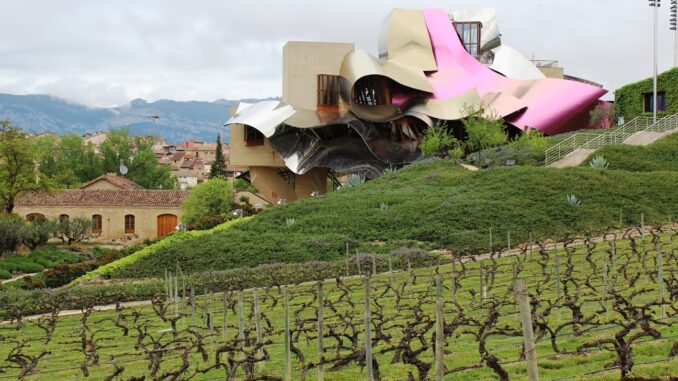
There is waaaay more to Spain than my two favorite wine regions, but for this article, we distill Spain’s enormous cornucopia of eye candy into Rioja and Priorat, the country’s only two DOC & DOQ regions. Omitted, but exploration-worthy D.O. regions: Rias Baixas (albariño amazingness); Ribero del Duero (tinto fino– a tempranillo ‘nom de plume’ – plus Bordeaux varietals); Jerez (world’s only ‘legit’ sherry); and Penedès (cava.)
Within the EU, Spain marches to a different drummer; and within its own borders, citizens do, too. The landscape is wrapped in contradiction: arid, spiky mountains that roll into deserts, adjacent to mountains drowning under vegetation that taper into lush forests. Dramatic coastlines resemble Northern California’s windswept tree-cliffs, or else bare, jaggedy sun-burnt cliffs dropping straight into the sea.
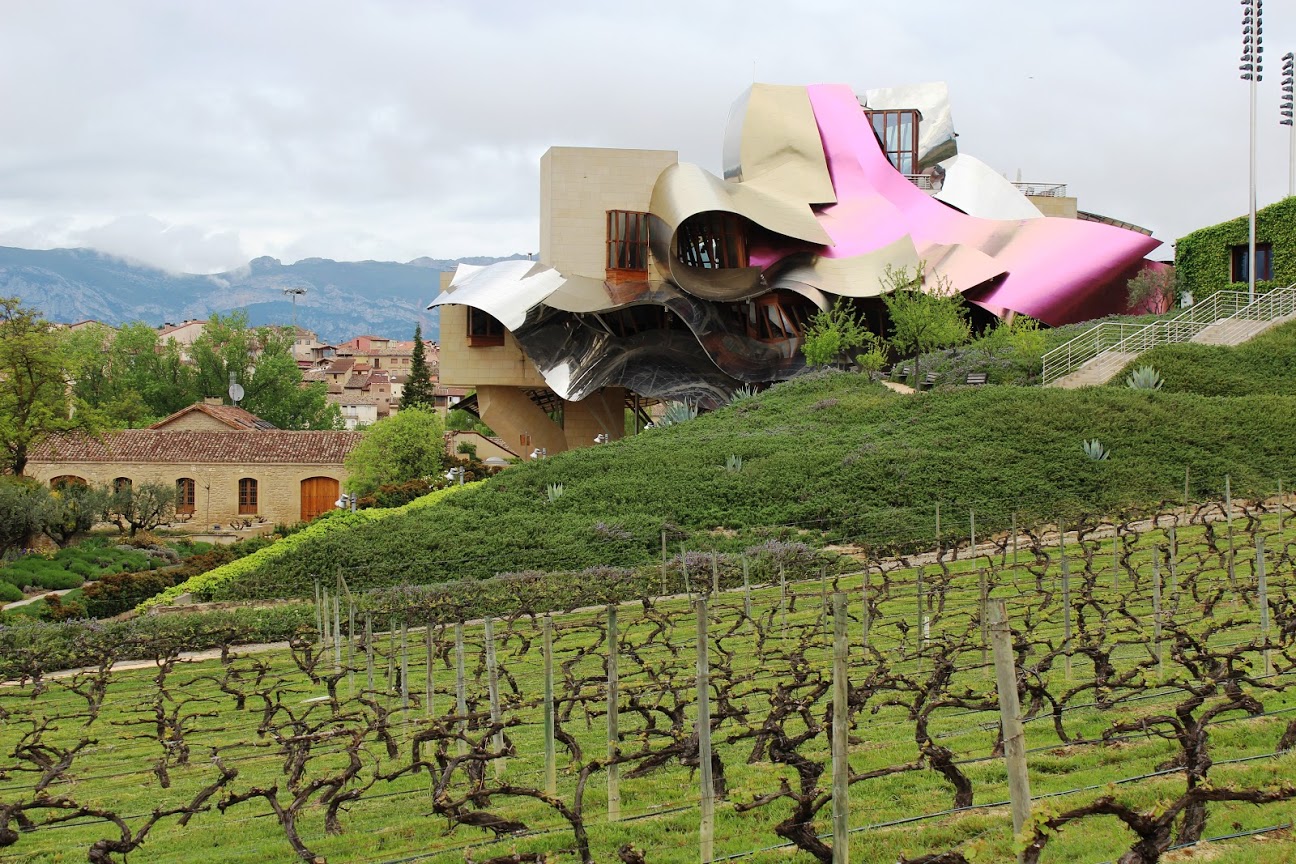
Driving is a bit wacky, especially in cities; but traversing wine countries is relatively easy (minus an endless peppering of toll booths that interrupt getting anywhere quickly.) Wineries are called bodegas and usually require appointments.
As for my two favorite Spanish wine regions, Rioja is north, tucked below Basque country, and more green than the Priorat—Catalonia’s brown sub-region that achieved DOQ status later than its’ northern sibling. About four hours apart in the middle, it is worth the effort to try to squeeze both into one trip.
| Region | RIOJA | PRIORAT – Catalan spelling
(‘PRIORATO’- España) |
| Location | 60 mi S of Bilbao | 90-100 mi W of Barcelona |
| Unofficial “capital” | Haro | Scala Dei (God’s Stairway – a former priory/ monastery) |
| Terroir Sub-Zones | Alavesa
Alta Baja |
Montsant (formerly Falset) |
| The ONLY 2 “Qualified Appellations of Origin”, or ‘DOC/Q’s (Standards slightly higher. Rest of Spain’s wine regions are labeled ‘D.O.’) | DOCa
Denominación de Origen Calificada |
DOQ
Denominación de Origen Qualificada (Catalan spelling) |
| Aging
& Ranking Reds (Whites = same order, need less time.) |
Joven young, 1 yr after harvest
Crianza 2 yrs; min 6 mos. in oak Riserva 3 yrs; min 1 yr in oak Gran Riserva 5 yrs; min 2 yrs in oak |
No heirarchy. NOTE: Seek out dessert wines ‘vis dolçes’ |
| Oak favored for aging | American | French |
| Primary RED grapes
(italics = blending varietals) |
Tempranillo (-also ‘Tinto Fino’)
Garnacha, Graciano Mazuelo (-also ‘Cariñena’) |
Garnacha
Cariñena Cabernet Sauvignon Merlot Syrah Tempranillo |
| Primary WHITE grapes
(italics = blending varietals) |
Viura (also ‘Macabeo’) Garnacha BlancaMalvasia |
(Hot, dry, infertile terraced mountain vineyards not friendly for great whites) |
| Bar “Appetizers” – supposed to sustain you until 10 PM dinner; but meal-worthy on their own… | Pintxos
(PEEN-chose) or (PEEN-chothe) if you can pull it off without sounding condescending |
Tapas
(DOP-oz) or (DOP-oth) if you can pull it off without sounding condescending |
| How much is this/does this cost? | Zenbat balio du?
(roughly ZEMba ba-LEE-o-lu) |
Quant costa això?
(roughly QWAN-KOHstah ah-E-sho) |
| Artistic sensibilities | Balenciaga, Placido Domingo, (Gehry) | Gaudi, Picasso, Miró, Dalí |
| Authentic Spanish Website for Wine-centric Planning | http://us.riojawine.com/en/ | http://www.doqpriorat.org/en |
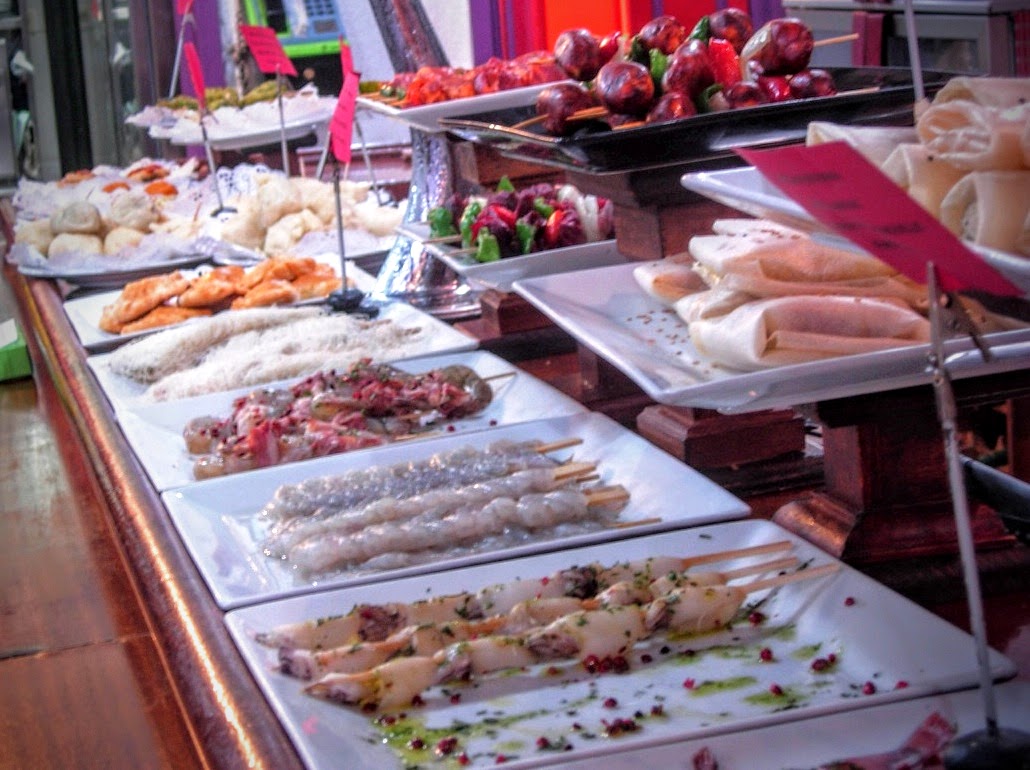
While Basque country is technically above Rioja’s border, Basque loyalists heavily influence North Rioja, and locals always appreciate visitor efforts to honor their language and traditions.
By the way, if you trek anywhere in the Haro-to-Alfaro zone, you have no excuse not to make the short trek north to Bilbao and then 30 minutes over to San Sebastian, both the pride of Basque country.
While there, drink TXAKOLINA, a slightly fizzy, super-dry white wine from Hondarribi Zuria and Munemahatsa grapes. To pronounce correctly, channel your best Dana Carvey singing Choppin’ Brocc-o-li, and shorten to CHOCK-o-leeee... I’m partial to reds, but my husband couldn’t get enough of it. It is poured quite dramatically from great heights into ample, bulbous stem glasses by the server, who extends full arm-span with the bottle above their head and glass at the waist (knee level, if they like to show-off.) They have pouring championships. Trophies are displayed with great pride.
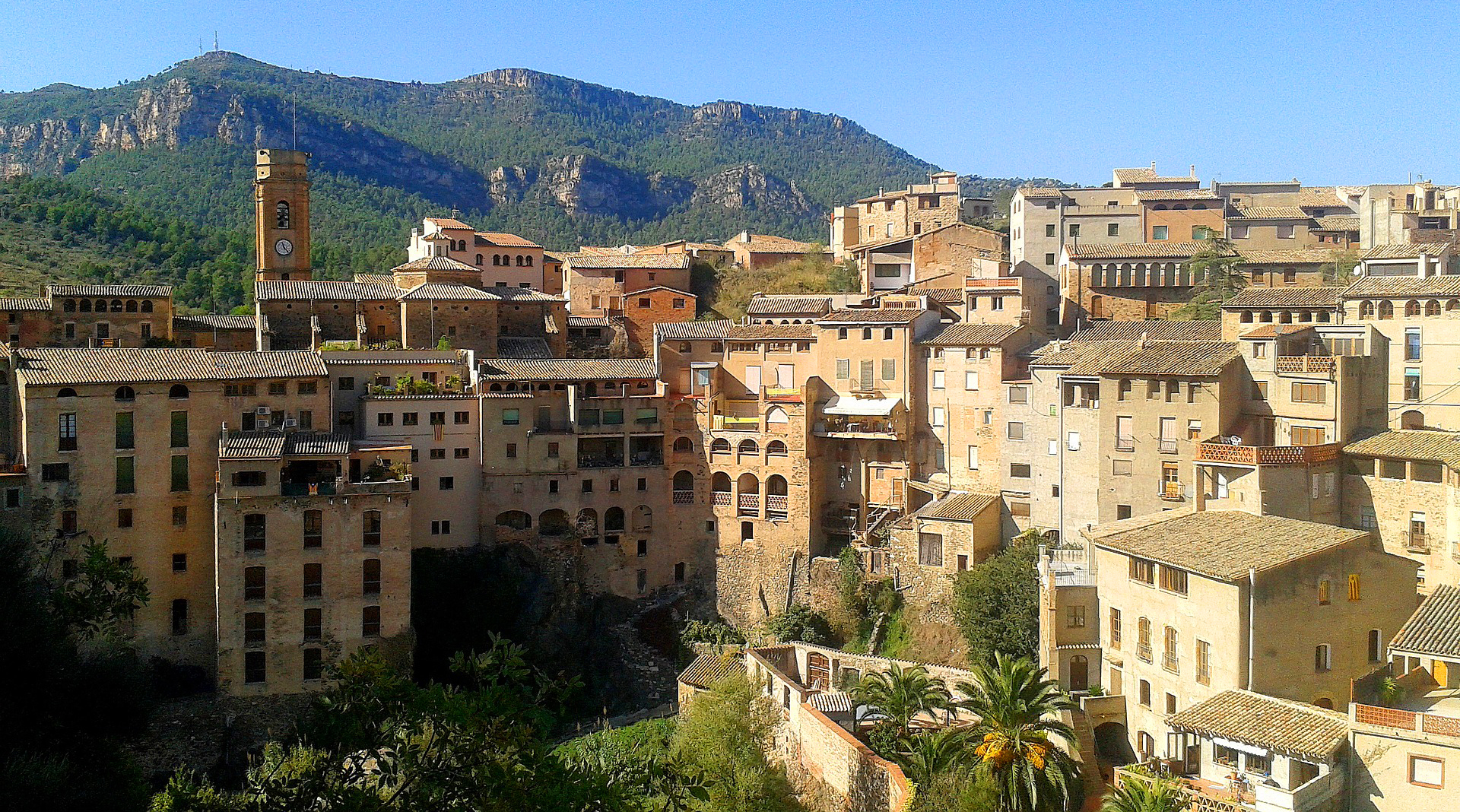
Bilbao is also known for an amazing array of gin cocktails (long before gin became the hip, latest liquor of choice.) Every bar features its own signature cocktail. San Sebastian (also known as Donostia) tends to nudge out Bilbao for foodies. Either way, we love them both!
As for the Priorat, things are a little more remote in its 23 villages. (Barcelona is the ‘big dog’ about 90 minutes away.) We found a [cooking school-slash-wine-touring operation] in its heart, which offers a whole new way to experience the area. Chef Alicia offers a number of packages and options (NOT a paid endorsement.)
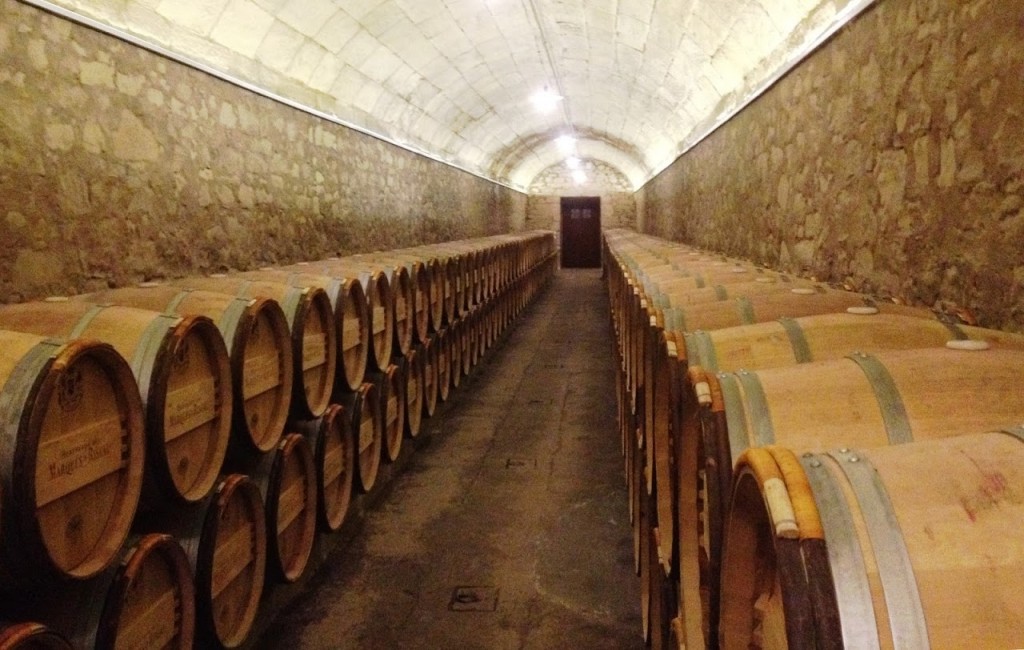
And finally, an American’s quick-and-dirty on Spain’s cities’—at least during the Spring shoulder; maybe High Season changes things up a bit(?) Be prepared:
- Little opens before 10 AM – maybe coffee shops. Maybe.
- Lunch – usually 11:30 or Noon, hard stop at 2:00. Do NOT wait longer to eat lunch. Miss it and you will not eat until the earliest pintxo/ tapas bars open again… 5/6-ish, 4:00 if you’re lucky.
- 1:00 to 3:00 PM seems to be National Jogging Hour of some sort.
- Posted hours anywhere are guidelines – not set in stone. Get over it.
- Pintxos / Tapas: In cities, no less than 5 bars per block, usually more. Also for mid-day coffee, or café. (Villages have fewer.) Try different styles: dives, high-end, shellfish; sandwich-y, food-on-a-stick. Sometimes hot and ready-to-grab, or else point and they cook it up à la minute. (Pay when you are done: somehow they remember what you had. However, some ask for upfront payment-especially if busy. In tapas country (vs pintxos), you may not need to pay at all.)
- Restaurants: We’ve seen 50 people blow in at 10 PM, including families with very young children. Every table fills up for 2-3 hours after that. This is normal.
OK, raise a glass and take your pick:
On egin! Topa! Eskerriska! (Basque)/ Salut! Txin txin! (Catalan)
Lori Stevens, former wine magazine food editor has worked for wineries and traveled extensively through most of the world’s wine, craft beer, cider, and scotch-producing regions. Author of Wine: A No Snob Guide: Drink Outside the Box, Berkeley: Rockridge Press, 2015; she currently lives in Seattle.